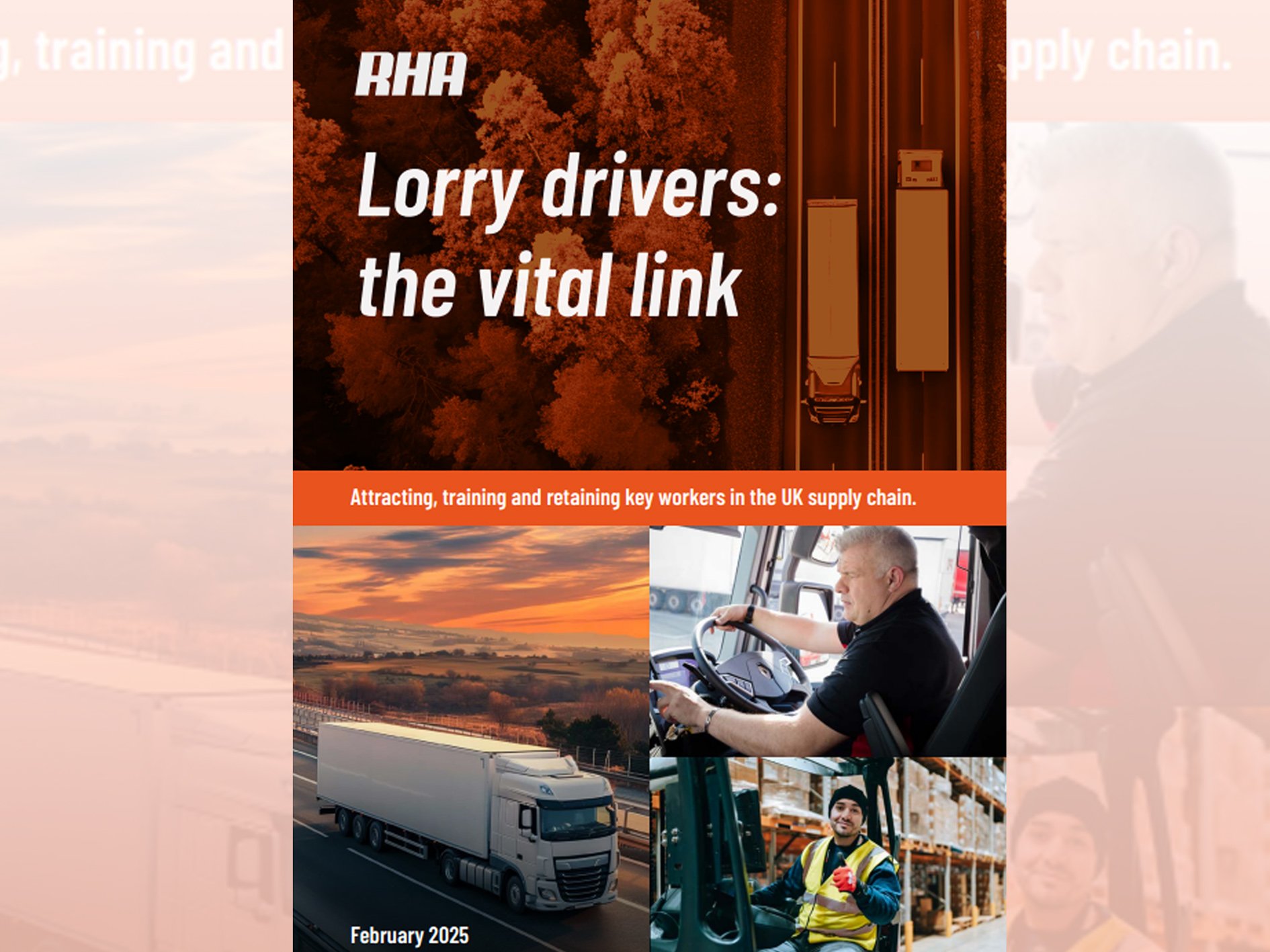A staggering 40,000 new drivers per year are required over the next five years to avoid a repeat of the 2021 driver shortage, a new report suggests.
In a wake-up call to industry and Government, the Road Haulage Association (RHA) says its critical that 200,000 drivers are recruited between now and 2030.
The report – ‘Lorry drivers – the vital link – attracting, training and retaining key workers in the UK supply chain’ – published by the RHA, highlights how, with 81% all freight in the UK transported by road, firms and drivers in the sector are essential to keeping supply chains running smoothly.
It estimates that the UK’s logistics industry will require 40,000 new HGV drivers annually for the next five years – to meet growing demand and to avoid the sort of driver shortage seen in 2021.
The association also makes a series of recommendations aimed at improving the retention of drivers.
RHA skills policy lead, Sally Gilson said: “Businesses across the road transport sector are key economic enablers – and attracting people into the industry and building the foundations for a future workforce is essential.
“If we’re to future-proof the industry for the long term, we need to recruit, train and retain tens of thousands of drivers annually to meet demand.
“With an ageing workforce, we also need to attract more young people into the industry. To get there, we must prioritise flexible, funded training options.
“Rising costs and insolvencies equally highlight the need for continued support through programs like bootcamps to ease training expenses.
“Industry and Government collaboration with training providers will be key to recruiting and retaining staff and avoiding future driver shortages.”
Key recommendations from the RHA include: greater flexibility within the new Growth and Skills Levy; more industry collaboration with schools and colleges at a local level to promote careers in logistics; and develop industry specific training programmes such as T-Levels.
Georgina Hicks, CEO of the LGV Training Company, said: “The latest report from the Road Haulage Association highlights the structural challenges facing the logistics sector, particularly the urgent need to recruit and retain younger drivers.
“With only 2.2% of HGV drivers under the age of 24, we risk losing a generation of talent in a sector vital to the UK’s economy.
“The findings also highlight the challenge employers face with high insurance costs for young and newly qualified drivers. This can make it harder for businesses to take on fresh talent, even when there’s clear potential.”
Hicks believes that a Government-backed scheme for drivers under 25, offering reduced premiums through subsidies or guarantees, would help remove this hurdle and create more opportunities for younger drivers to establish long-term, rewarding careers in the industry.
She continued: “As part of our commitment, we’re gathering data from our trainees to show the real impact of insurance costs and are working with industry bodies to push this issue to policymakers.
“By driving these conversations, we aim to create a more accessible and supportive environment for the drivers of the future. But solving the insurance issue isn’t enough on its own.
“The Government also needs to look at improving rest facilities, which play a big part in driver retention. Secure parking, clean washrooms, and better food options at rest stops would make a real difference to the working lives of drivers.”
Just 1% of HGV drivers are female

More than half (55%) of HGV drivers are over 55, and just 1% are female, according to Driver Hire Training.
To help inspire the next generation, Driver Hire Training spoke to professional driver, Chantelle Spencer (pictured above) in Leeds, about her career and to give advice for any young people, especially women, who are thinking about getting into the industry.
She said: “Before I became a driver, I’d had lots of different jobs but it wasn’t until I got a job as a stock analyst and met drivers that I learned how easy it was to become a professional driver.
“There are no school or college qualifications needed to start a career as a professional driver. All you need is to have a driving licence and complete the CPC training, and you can start driving right away - it’s accessible to anyone.”
She explained: “There is a Government scheme where you can do the training for free, but it takes longer – I decided to pay for my training and was qualified in just a few months.
“Now I’ve been working as a professional HGV driver for just under a year and so far, I’ve worked for a drink supplier, a roofing company, and a pharmaceutical company.”
“You can earn a great wage by working even minimal hours, and it’s flexible – there’s so many different types of jobs and companies to suit your lifestyle and your preferences.”
She added: “The more women we have in the industry, the more likely it is that other women will see it as a job they can do.
“We need to attract young people who have no connection with the industry and educate them on what’s possible, and what they can get out of it.
“Even at university, you could work part time earning a great wage and do your degree alongside it.
“If you want the freedom of a job where you manage yourself, I recommend anyone who is interested to have a look into a career as a professional HGV driver.”






















Login to comment
Comments
No comments have been made yet.